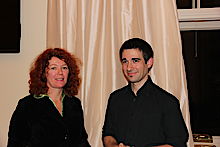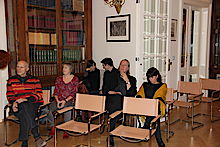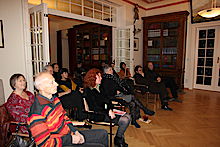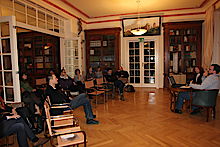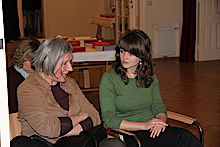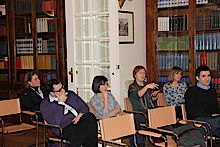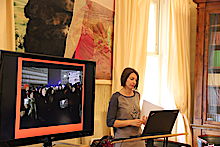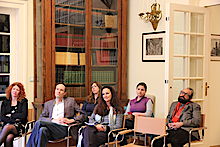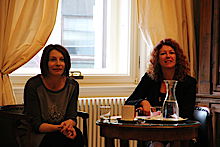Abstracts der Vorlesungsreihe Südosteuropastudien: Theater und Musik
Karl Kaser: Visuelle Kulturen im südöstlichen Europa
27.09.2012, 18 Uhr, Don Juan Archiv Wien
In meinem Referat möchte ich mit einigen Eckpunkten einer dezentrierten Theoriebildung zur Geschichte der visuellen Kulturen im südöstlichen Europa befassen, die sich gegen eine Universalisierung westlicher visueller Kulturentwicklung wendet: These 1: Das mechanisch-reproduzierbare Bild wurde im südöstlichen Europa erst Jahrhunderte, die Fotografie einige Jahrzehnte und das digitale Bild nur mehr einige Wochen nach seiner Einführung im Westen akzeptiert. Diese These spricht für ein dynamisches Veränderungspotenzial visueller Kulturen in dieser Region. These 2: Das westliche Verlaufsmodell der Entfaltung visueller Kultur kann nicht auf die nichtwestliche Welt angewendet werden, da dies zu Erkenntnisirritationen führen muss. Seit der Einführung der Kamera sind die visuellen Kulturen des südöstlichen Europa nicht mehr unabhängig von denen des Westens, sie stellen jedoch keine Imitationen dar. Zu den zahlreichen „Widerstandsprojekten“, die bestrebt waren, den Verwestlichungstendenzen entgegenzuarbeiten, zählen die Fotoalben Sultan Abdülhamids, das kemalistische Visualisierungsprojekt oder der jugoslawische Film. These 3: Erst die Fotografie leitet die Säkularisierung visueller Kulturen im südöstlichen Europa ein. Diese These beinhaltet, dass die Sehtraditionen bis dahin von religiösen Blicken geleitet waren. These 4: Die Gesellschaften des südöstlichen Europa sind im Großen und Ganzen weniger säkular, als viele westliche Gesellschaften. Diese These argumentiert, dass in semisäkularen Gesellschaften wie den südosteuropäischen religiöse Blickweisen noch immer von Bedeutung sind. These 5: Bestimmte Arten der visuellen Repräsentation wurden zu wichtigen Instrumenten der Dokumentation und Ausübung asymmetrischer Machtbeziehungen zwischen „dem Westen“ und „dem Orient“ auf der einen und zwischen „dem Westen“ und „dem Balkan“ auf der anderen Seite. Diese These besagt nichts Anderes, als dass es der südosteuropäischen Region lediglich in einzelnen Phasen bzw. über einzelne Projekte gelungen ist, Bilder von sich selbst in der westlichen Welt zu etablieren, die nicht den gängigen Klischees entsprechen. These 6: Die Gesellschaften des südöstlichen Europa waren und sind tief patriarchalisch geprägt, was sich auch in der visuellen Repräsentation widerspiegelt. Dies drückt sich etwa in Familienfotografien oder im jugoslawischen Film, der ein beinahe ausschließlich männliches Projekt darstellte, aus.
